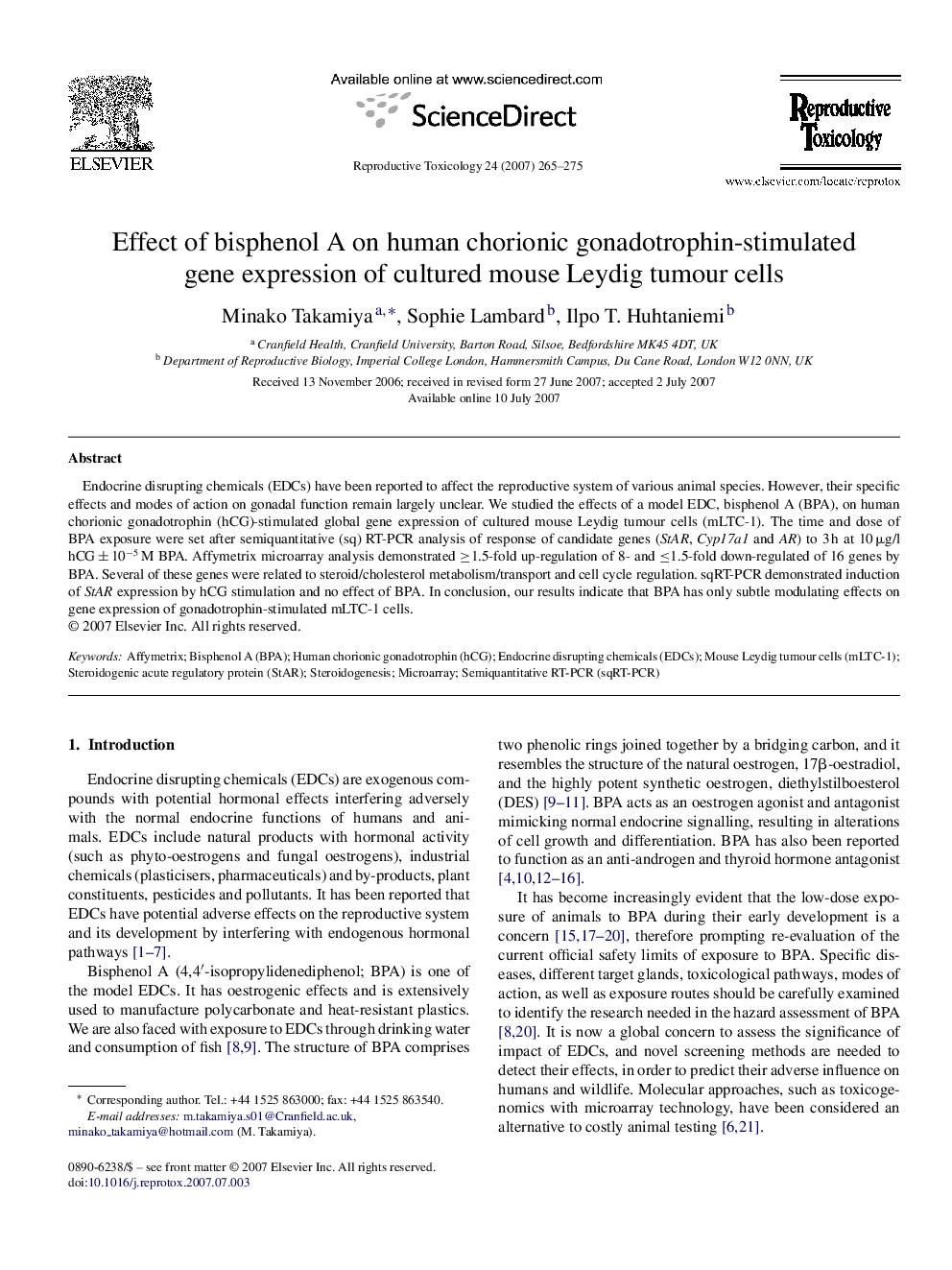| Article ID | Journal | Published Year | Pages | File Type |
|---|---|---|---|---|
| 2595277 | Reproductive Toxicology | 2007 | 11 Pages |
Endocrine disrupting chemicals (EDCs) have been reported to affect the reproductive system of various animal species. However, their specific effects and modes of action on gonadal function remain largely unclear. We studied the effects of a model EDC, bisphenol A (BPA), on human chorionic gonadotrophin (hCG)-stimulated global gene expression of cultured mouse Leydig tumour cells (mLTC-1). The time and dose of BPA exposure were set after semiquantitative (sq) RT-PCR analysis of response of candidate genes (StAR, Cyp17a1 and AR) to 3 h at 10 μg/l hCG ± 10−5 M BPA. Affymetrix microarray analysis demonstrated ≥1.5-fold up-regulation of 8- and ≤1.5-fold down-regulated of 16 genes by BPA. Several of these genes were related to steroid/cholesterol metabolism/transport and cell cycle regulation. sqRT-PCR demonstrated induction of StAR expression by hCG stimulation and no effect of BPA. In conclusion, our results indicate that BPA has only subtle modulating effects on gene expression of gonadotrophin-stimulated mLTC-1 cells.
